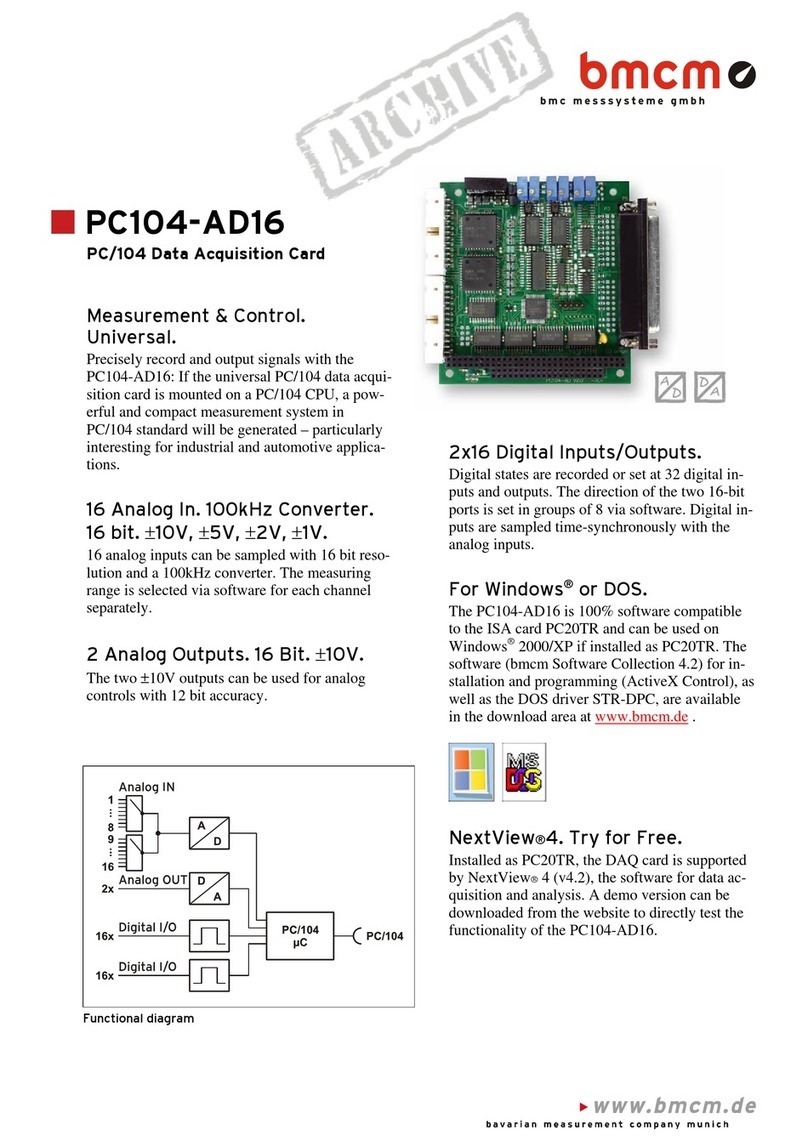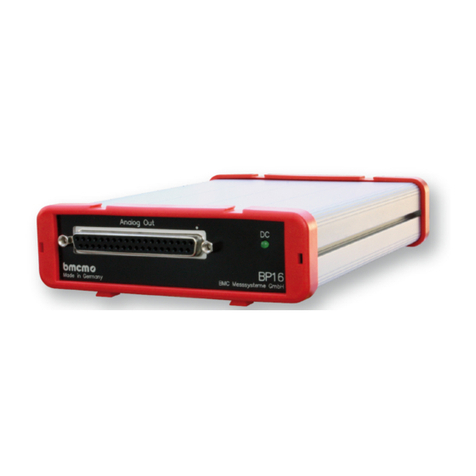AP8a
Seite 3
2.2 Ground-to-ground resistance
Ideally, the output ground is not electrically connected with the power supply ground. If, however, a
connection to ground is necessary (e.g. to use the output switch in the 5B module), the 2-pin jumper
(see Figure 1) must be closed. In case of electrically connected systems (e.g. PC), this jumper
represents a high-resistance bridge (1k) and may generate a hum loop.
2.3 Analog OUT connector
The amplifier outputs are available at the 16-pin pin connector (see Figure
1). They are connected to the analog inputs of the data acquisition
system.
The output cable can be laid with the same signal ground and shield in
case of short distances (long distances may lead to cross talk).
2.4 Input terminals
The measuring signals are connected to pins HI and LO of the input terminals (see Figure 1).
Depending on the 5B module used, the +EX and -EX pins provide the relevant supply for the sensors.
Pins +SE and -SE are sensor lines and are connected according to the relevant application (e.g. for 6-
wire technology in strain gage measurement). the shield of the analog input cables can be applied to
ground or 0EX depending on the application (always connect at one end of the cable only).
Comfortable connection to the input terminals is possible by using 7-pin spring terminal blocks
available in a package of 8 (order number: ZU7ST).
Run the signal ground separately if possible. Always lay input cables separately.
2.5 Module pin assignment
The pin assignment on the right shows the top view of the module
backplane (see Figure 1). It corresponds to the 5B modules of
Analog Devices®, BURR BROWN®etc.
However, an additional 0EX pin has been introduced particularly
suitable for ungrounded shielding. This is a specific assignment of
bmcm. The 0EX pin is not connected in modules of other
manufacturers.
The AP8a also supports the use of output modules.
2.6 Current measurement modules
If a current measurement module requires an external shunt, it can be inserted in front of the relevant
5B module.
2.7 Thermocouple connection
Using a thermocouple requires a cold junction compensation. The relevant element is plugged
underneath the module slot (see Figure 1). This allows the installation of a cold junction compensation
directly at the terminal connection of the thermocouple matching the 5B modules.























